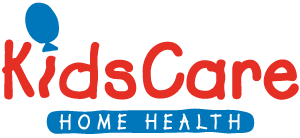
All kids have moments of frustration and “act out” from time to time. Whether it’s because they don’t want to leave the playground or are unhappy with the word “no,” emotional outbursts in children (and how to manage them) are among the more challenging aspects of parenting. However, when this behavior becomes overly disruptive, difficult to handle alone, or begins to affect social interactions (i.e., school, playgroups, etc.), it may be time to seek professional help.
Today’s blog post examines the link between behavioral health and physical activity. Can more or specialized physical activity help address the behavioral concerns of a child? The short answer is yes.1 We’re reviewing the behaviors parents should watch for, and how including pediatric physical therapy strategies can help children and caregivers better manage behaviors and find a balance that supports thriving.
What is Pediatric Physical Therapy?
Pediatric physical therapy helps facilitate movement in children while supporting their natural abilities to overcome adversity and physical impairments. The way physical therapy benefits your child depends on their medical status and the challenges they face.
Physical therapy is safe for children and provides many physical, mental, and behavioral benefits – especially if your child has any mental or physical impairments, injuries, or chronic health conditions that can interfere with achieving their full potential.
Pediatric Home Health Physical Therapy and Behavioral Concerns in Children

We can’t expect kids to fully understand the emotions that bombard them throughout the day, like happiness, sadness, excitement, or frustration. Part of growing up is learning to manage emotions healthily, and the learning often continues into adulthood.
However, when certain behaviors in children become uncontrollable and extremely difficult to manage alone, it’s usually a signal to seek professional help. Following are the most common behavioral concerns encountered in our practices:
- Not following directions or rules
- Poor impulse control
- Physical aggression such as hitting, pinching, kicking, or throwing things
- Temper tantrums
- Self-injury such as head-banging, hand-biting, self-rubbing, and scratching
- Disruptive behaviors such as screaming or yelling
- Toileting difficulties
- Bedtime/sleep problems
- Social skill problems such as not getting along with peers
- Habits such as hair pulling, thumb sucking, or air swallowing
Continued display of these behaviors may require special attention to correct, and the process takes time and patience.
Parenting is a full-time job that can be difficult to manage alone, especially when disruptive behaviors continue unchecked. Deciding to seek help is the first step, and your primary care physician is a great place to start. They can help determine if your child will benefit from outside assistance, like pediatric physical therapy, to help manage behavioral concerns.
Is Your Child in Need of in Home Pediatric Physical Therapy?
Being healthy is important for all children and can be especially important for children with behavior or conduct problems. Unfortunately, our society is emerging from a global pandemic that affected the health and well-being, both physically and mentally, of people of all ages, including children.
A survey2 of 1,000 parents across the USA in May 2021 on what the most unhealthy aspect of the pandemic has been was social isolation (30%), too much screen time (22%), fear of the virus (11%), and lack of physical activity (7%). This same group thought socializing (57%) and exercising (49%) were pillars of mental health that were compromised. Nearly two-thirds (64%) feel the pandemic will have a lasting effect on their child’s development.
30
22
11
7
As simple as it seems, sometimes more movement is all a child needs to help curb behavioral impulses and outbursts. For example, researchers conducted a study on children and teenagers with conditions that included autism spectrum disorders, attention deficit hyperactivity disorder (ADHD), anxiety, and depression. They evaluated whether structured exercise during the school day (on stationary “cyber cycles”) could help ease students’ behavioral issues in the classroom. Over a period of seven weeks, the study found that the kids were about one-third to 50% less likely to act out in class compared to seven weeks when they took standard gym classes.
Although the kids in this study had more severe disorders, the study is promising and underscores not only the correlation between mental health and physical therapy but also the positive effects increased physical activity can have on behavior control. There has been a lot more interest in physical therapy for mental health, and the emerging evidence is exciting.
If your child is exhibiting concerning behavior, it may be time to examine their physical activity. How much movement and exercise are they actually getting every day?
Home Pediatric Physical Therapy to Help Address Behavioral Concerns

The Institute of Medicine recommends a minimum of 30 minutes of play in elementary schoolers and 45 minutes in middle and high schoolers. However, physical education and recess are increasingly being cut to focus on children’s cognitive development through academics.
So, here are some easy ways to incorporate and improve physical activity in your child’s routine:
- Incorporate screen-free play into your child’s daily routine. This can take place inside or outside, and it can be helpful to include balls, jump ropes, hula hoops, or any other sports equipment to keep children active and moving.
- Model physical activity by taking long walks or bike rides with your child or plan breaks every 10-20 minutes from the TV or other stationary activities to walk around the house or jump around.
- Find fun games online to play with your child based on their age. For example, check out the YouTube channel “Pediatric Therapy Essentials” or @kidsense_ct on Tik Tok for ideas from PTs and OTs.
- Make reading with your child a physical activity by mimicking the movements of the characters in their story.
- Speak with a pediatric physical therapist, occupational therapist, PE teacher, or any professional that incorporates exercises and movement to help provide individualized games and exercises that can meet your child’s needs and schedule.
Utilize the Benefits of Pediatric Physical Therapy for Behavioral Issues
Whatever strategies for physical movement you use will benefit the health and well-being of your child. Although the medical community is still working hard to determine to what extent physical therapy is needed to improve mental health and behaviors, we have enough data to show PT for kids can be beneficial.
For example, anatomically speaking, we know that exercise causes the body to release endorphins, i.e., chemicals in the brain that relieve pain and stress. It also reduces stress hormone levels, like cortisol and adrenaline, which further supports the benefits of physical or sports therapy for mental health improvement.
Navigating parenthood and the many challenges of raising healthy, balanced children in today’s world is not easy – it takes a village, right? Identifying behavioral concerns is the first step – and seeking professional help is the next. If your doctor recommends pediatric physical therapy for children, the professional pediatric therapists and nurses at KidsCare Home Health are ready to help. We specialize in caring and compassionate in-home therapy services for children of all ages. Contact KidsCare Home Health today!















